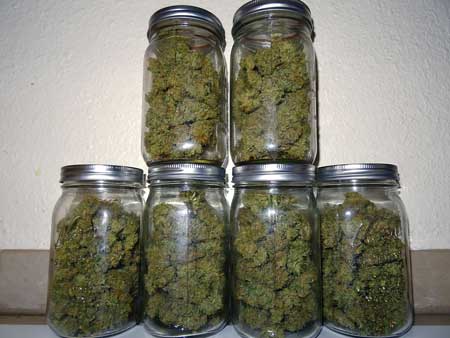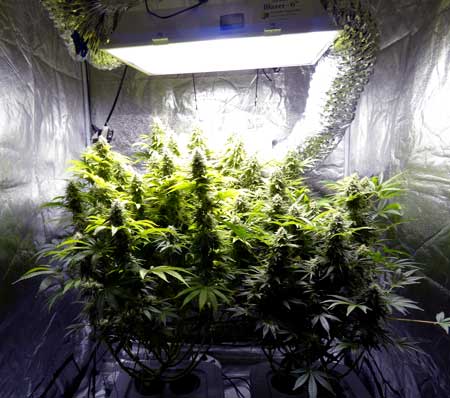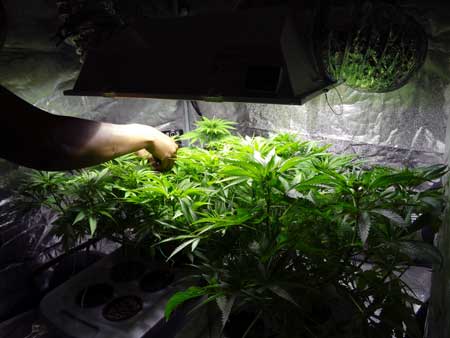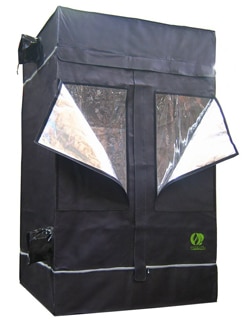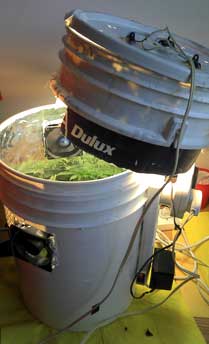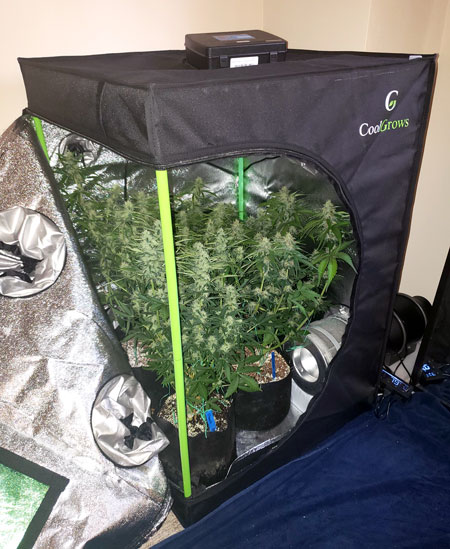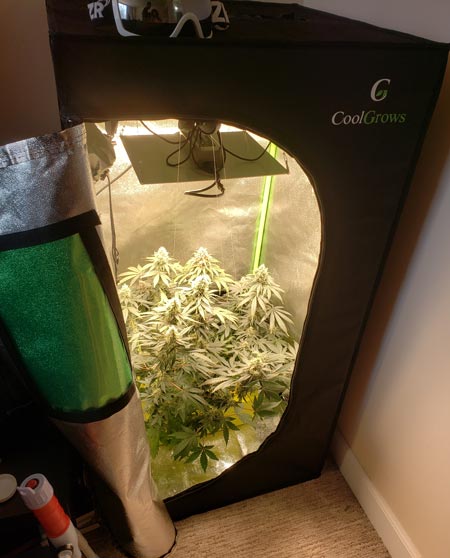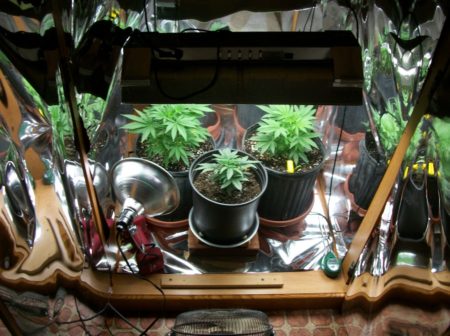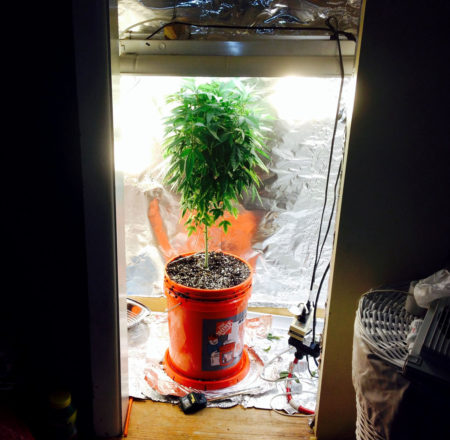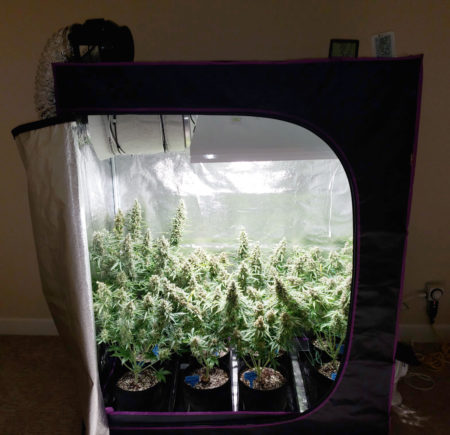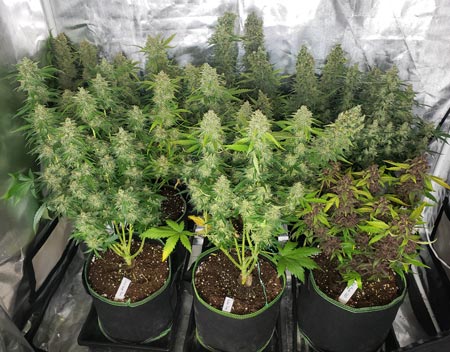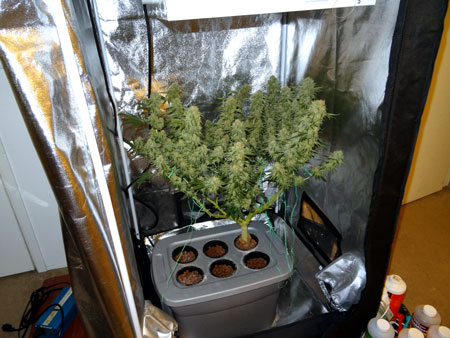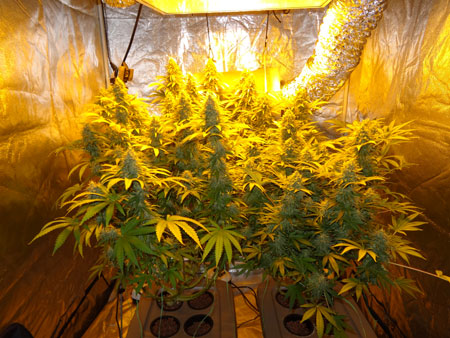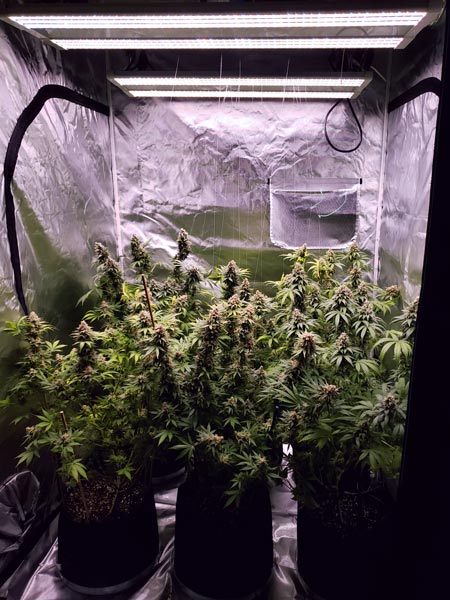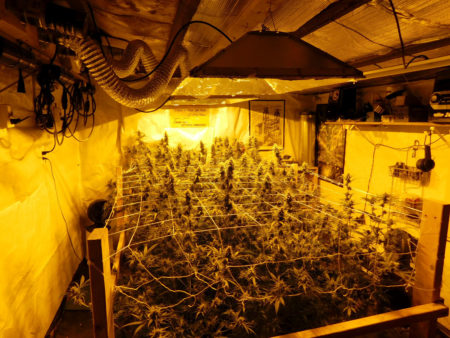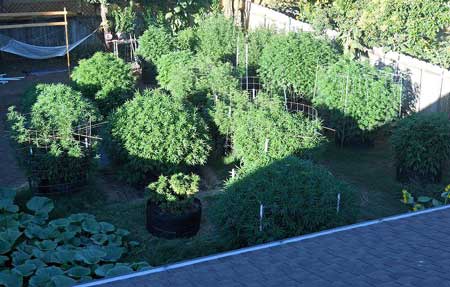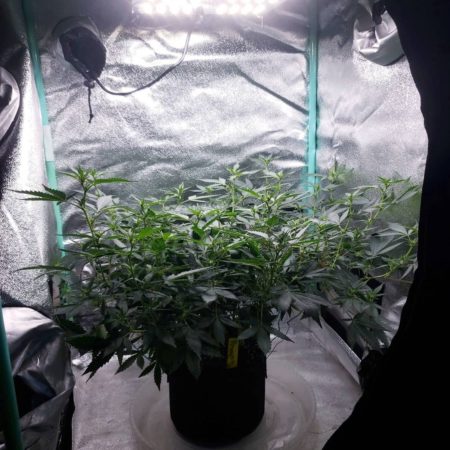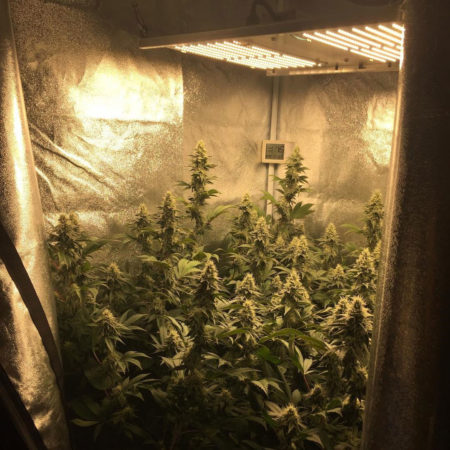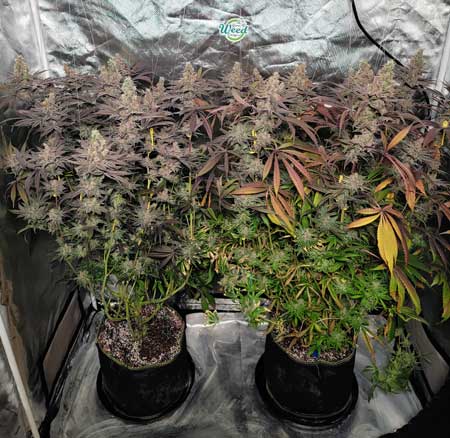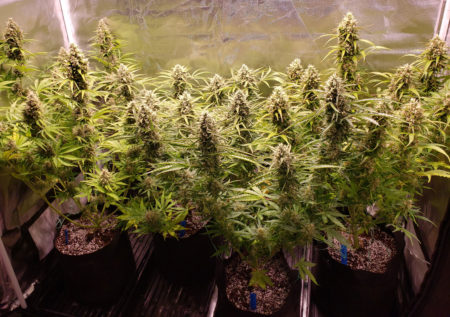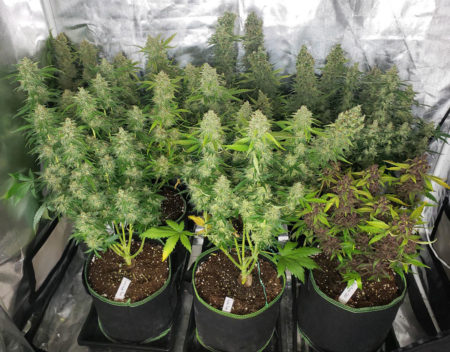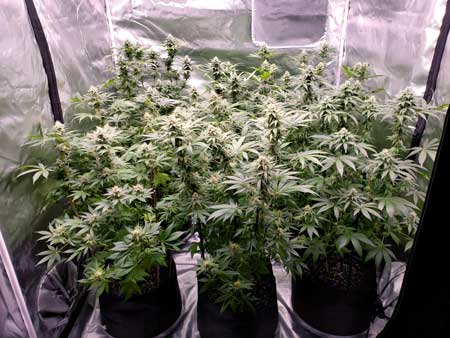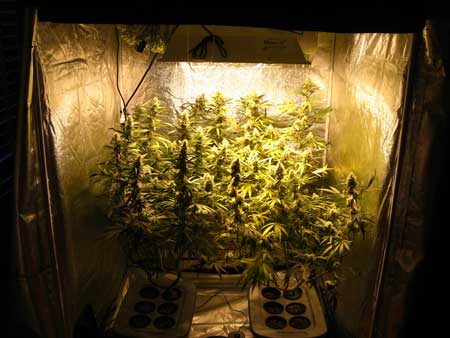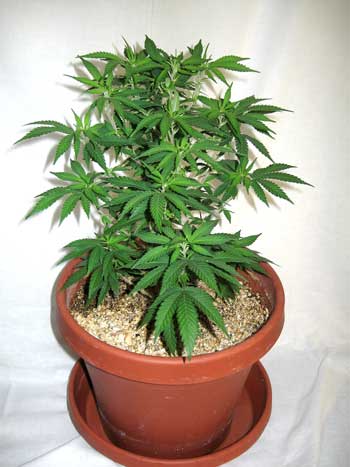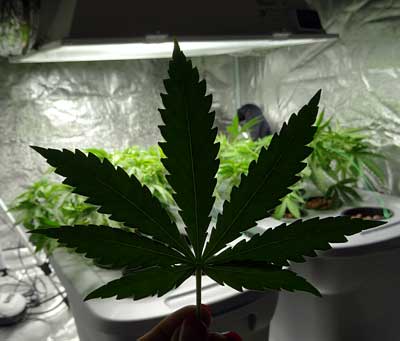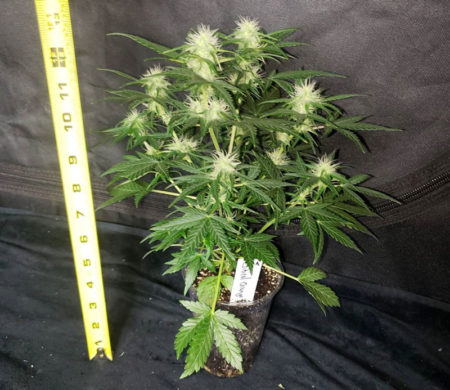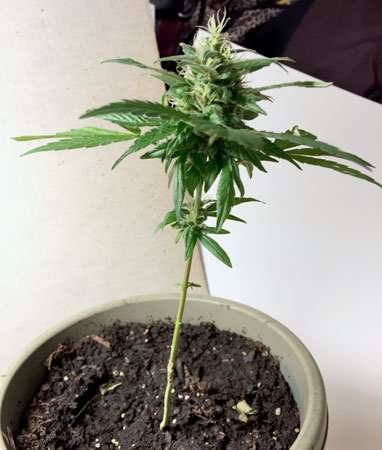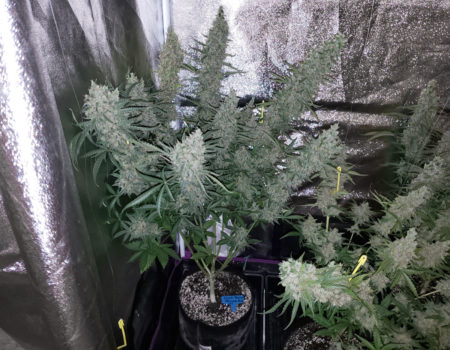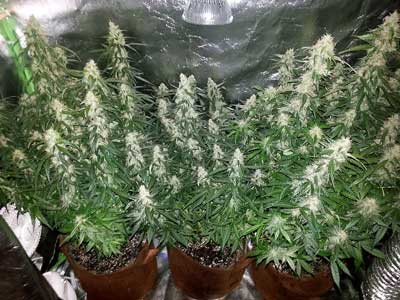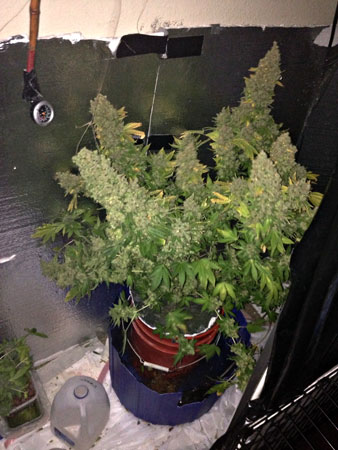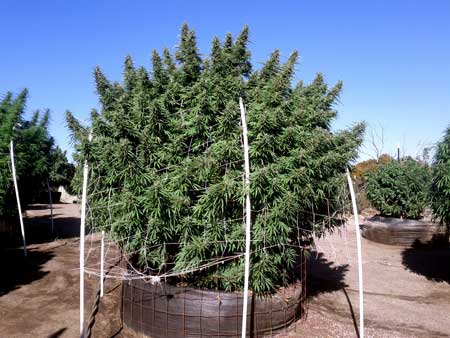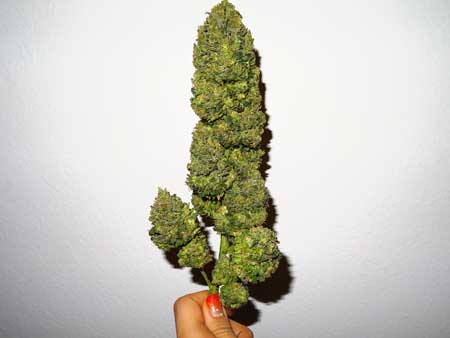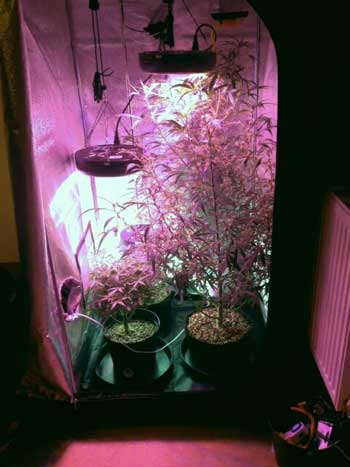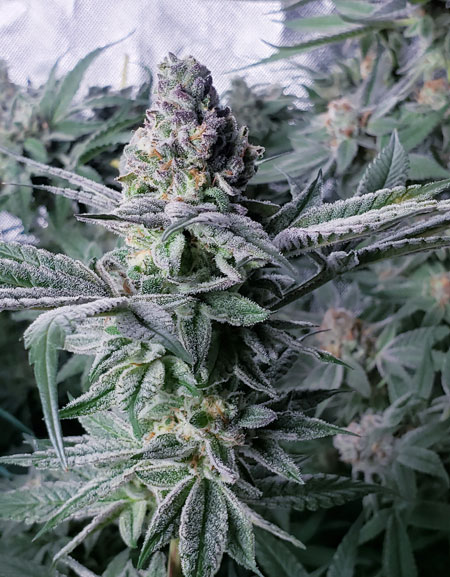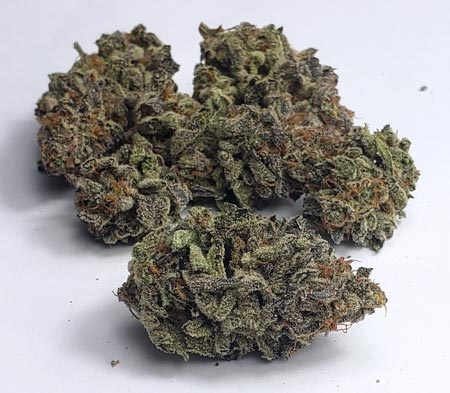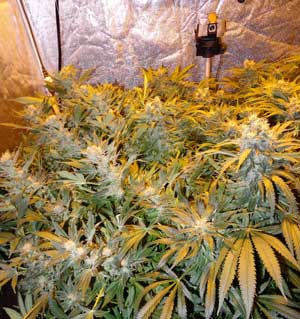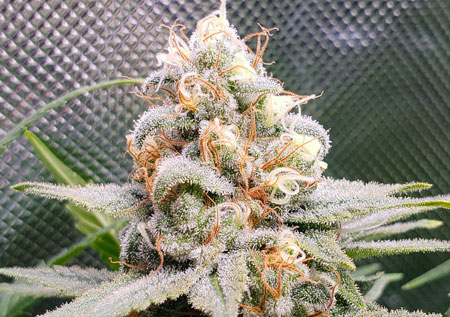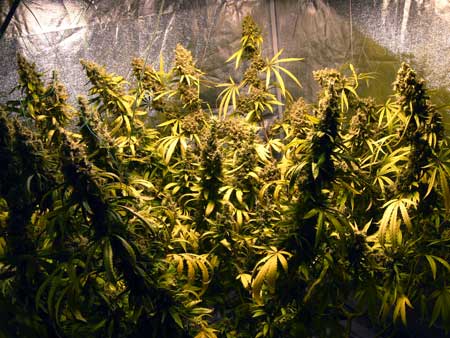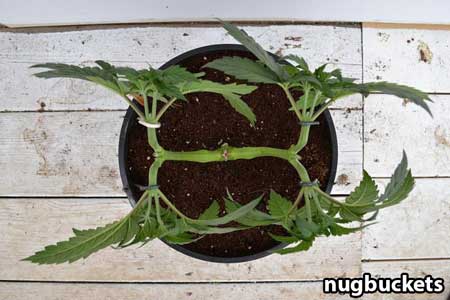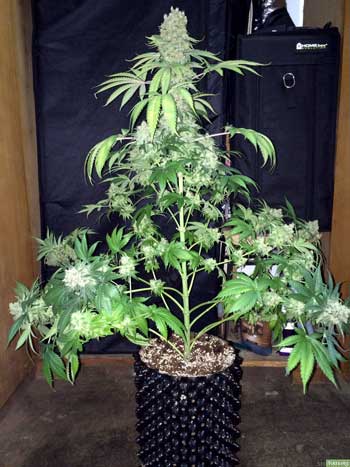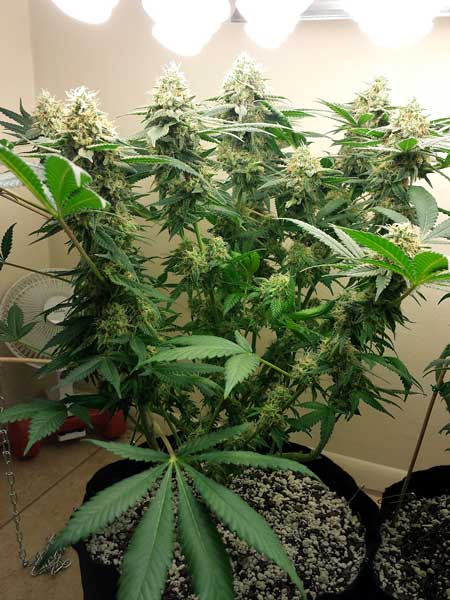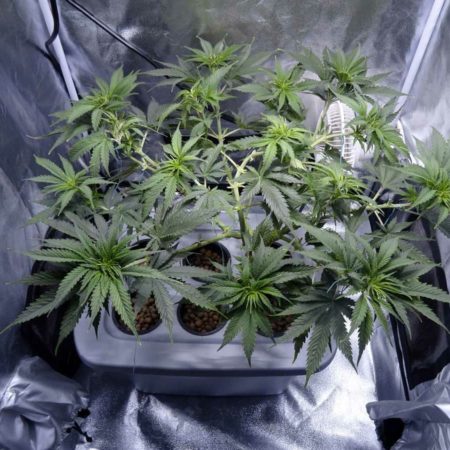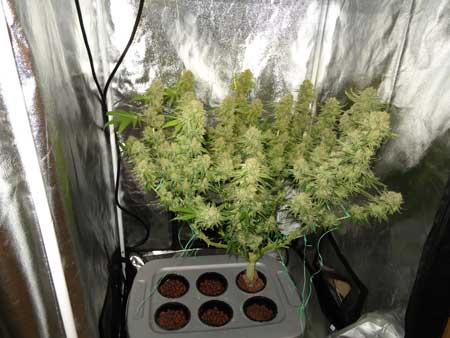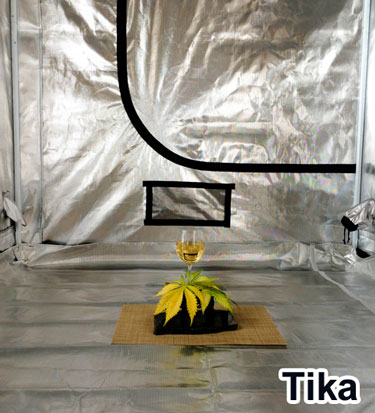by Sirius Fourside
Two of the most common questions from new cannabis growers are, “How much weed can I expect in my setup?” and “How can I improve yields?”
What’s the maximum amount of weed you can produce with your setup? Discover the answer today!
If you’re thinking about growing cannabis for the first time, you probably want to know what yields to expect. You don’t want to invest time and money if you won’t be happy with the results.
That’s where the “limiting factor” comes in.
In nature, a limiting factor is the key environmental condition that restricts a population size. For example, the maximum population of rabbits in an area is limited by the number of local foxes. The more foxes (which prey on rabbits), the fewer rabbits.
When growing cannabis, a limiting factor is something that restricts the amount of bud you can harvest. For example, a couple of large plants could yield over a pound of weed with a high-yielding strain under a 600W LED light. But if you only grow one plant in a tiny Solo cup, the small size of the plant becomes a limiting factor because tiny plants can only produce a few ounces of weed even in perfect conditions.
What cannabis yields can you expect to harvest from a specific grow light or setup? Plant size and coverage under the light are common limiting factors. Big, wide plants can produce more weed than little ones.
It is tough to guess exactly how much you’re going to harvest even with detailed information because the environment, strain, and your growing experience make a huge difference. However, this article helps you identify the limiting factor in your setup and estimates what yields to expect if everything goes smoothly.
This article covers how to estimate and improve yields based on your setup. However, you and your actions are ultimately the most important variables.
How This Works
The next session shares the 5 aspects of a grow setup that have the biggest impact on your yields: grow space, grow lights, container, strain, and plant training. Although all five of these aspects affect your yields, we only use the grow space, lights, and container to give you an expected weight range for yields. I’ll explain that part a little later.
There are two very important things to keep in mind about this info:
- Each grower’s skill drastically changes the amount of bud harvested from a grow. This guide is meant to give you an idea of what ballpark figures to expect; they’re not set in stone.
- Each estimate is a relatively large range, for example: 1oz – 10oz. The low end of that range (1oz) assumes the grow didn’t go well, the plant was unhealthy, or you’re using a low-quality grow light. Conversely, the high end of the range (10oz) assumes the grow went great and you’re using reliable equipment.
Let’s get started!
Grow Space
Your ‘grow space’ is the area your plants call home. This could be a grow tent, a cabinet, a closet, a PC case, a room in your house, or the great outdoors. Basically, it’s the area that physically limits how big your plants can grow (with walls, fences, etc.).
Note: If you can grow outdoors, I’m jealous!
Grow tents are an easy way to create the perfect cannabis grow environment
Stealth (Tiny tents, PC cases, tiny cabinet grows, etc.)
- Height of at least 3 feet (60 cm)
- Expected yields: Up to 2oz
Space buckets used to be pretty popular but the yields tend to be poor
Remarkably spaces like this 2’x2’x3 grow tent can produce quite a bit when set up with a quality mini LED grow light (here’s a tutorial to copy this setup), but typically tiny spaces only produce a few ounces.
Small Tents & Larger Cabinets – up to 10ft² (1m²)
- Larger than a PC case, but not much larger than a 2‘x4’or 3’x3’ area (0.6mx1.2m or 1mx1m)
- Space must be taller than 4 feet (1.2m)
- Expected yields: 3oz to 16oz
This 2’x’2’x4′ grow tent has a little extra height compared to the one above, giving you more flexibility to use slightly bigger grow lights. This 100W LED light produced just under 5 oz in a mini hydro tub.
Many closets and grow cabinets are in this size range. Often the main thing that limits your yields is the height of the space (because short plants tend to yield less).
If you don’t completely fill the space under the grow light, it will reduce your yields even if you have a lot of space. All that empty space is wasted.
I personally use a 2’x4’x6′ grow tent (0.6m x 1.2 m x 1.8m) when I grow. It can accommodate up to a 400W grow light and can fit in the corner of the room. I like that you can easily reach all the plants, and it can produce 16 oz (1 pound) or more in the right conditions, like this harvest under a 315 LEC grow light. Learn how to copy this setup.
This was grown under a 250W HPS in the same tent
3’x3’x6′ (about 1m x 1m x 1.8m) is another common size for grow tent. The square shape is better for some grow lights but my home is small and this size was harder to fit because it sticks out further into a room.
Hobby Level – 10ft² – 25ft² (1m² – 2.3m²)
- Larger than 3’x3’ (1mx1m), but no larger than a 5’x5’ space (1.5mx1.5m)
- Taller than 6 feet (1.8m)
- Expected yields: 7oz to 2lbs
A 4’x4′ grow tent (1.2m x 1.2m) that’s at least 6.5′ (1m) tall will accommodate bigger lights up to about 600W. This 600W HPS produced about 20 oz.
Here’s a 600W LED harvest (example 600W LED setup here) in the same 4’x4′ tent, producing over a pound.
Large Tents/Rooms/Etc. – Anything bigger
- Larger than a 5’x5’ (1.5mx1.5m) tent
- Taller than 6.5 feet (2m)
- Now we’re nearing the ‘grow operation’ size, so the yields can vary by a wide margin as the tents turn into rooms
- Expected yields: 2lbs+
This is beyond the size of most hobby growers
Outdoors
- Outdoor yields vary wildly depending on the grower, container size, and the amount of growing space available. The hours of direct sunlight a plant gets each day also plays a huge factor!
- Expected yields: A few ounces to many, many pounds
Grow Lights and Yield Estimates
I’m going to give several examples with pictures, but here’s the general formula we use to determine what yields can be expected for a new grow light. This is not exact in any way since every grow light is different, but it’s a good place to start if you’re looking for a ballpark figure.
CFLs, T5s, and Other Fluorescent Lighting: 0.25-0.5g/watt
HPS, LED, LEC: 0.5-1g+/watt
When talking about “watts”, I mean the number of watts being pulled out of the wall by the light, not “equivalent” numbers. You’re interested in actual power draw. It’s also worth noting that the Sea of Green technique can utterly destroy these numbers.
Light Size
Your grow lights provide the energy for your cannabis plants to grow big, strong and potent! Your grow bulbs produce light, your plants turn that light into energy and that energy fuels the growth of leaves, stems and buds. Generally, more light grows larger plants, but there is such a thing as too much light!
Stealth lighting (<100W)
- Usually consists of a smaller LED panel, or occasionally a T5 fluorescent grow light (Choose LEDs if possible! They get better yields per watt and make less heat.)
- Expected yields: A few grams to 3.5oz
Recommended: HLG 100 R-Spec – Use from seed to harvest and yields 2-5 oz on average.
Smaller lighting (100W – 300W)
- Usually consists of LEDs or a single small HPS
- Expected yields: 15g to 10oz (300W can yield up to 16 oz in exceptional conditions)
Recommended: SF-2000 (cheap) HLG 350R (more expensive but bigger yields) – Yields 5-14+ oz on average (up to 16 oz with the 350R in a really great grow).
Medium lighting (300W – 600W)
- At this size, your options for indoor grow lighting are LED, LEC (also called CMH) or HPS
- Expected yields: 5oz to 22oz
Recommended: HLG 350R – Yields 8-14 oz on average (up to 1 lb in a really great grow). Check out this setup.
Recommended for cool grow rooms: 315 LEC grow light (gets hot but yields up to a pound).
Recommended for cool grow rooms: 400W HPS yields 7-14 oz on average (check out this setup)
High-powered lighting (600W – 1000W+)
- Can be LEDs, but is generally HPS lighting, especially once you get over 600W. Commercial growers use multiple 600 or 1000W HPS lights which means the potential yields can vary greatly.
- Expected yields: 10oz to 2lbs+
Recommended: Get a 600W LED like the HLG Blackbird (perfect for a 4’x4′ grow tent) that yields up to 1.5 lbs per grow. Check out this setup.
Recommended for a cold grow room: Check out a 600W HPS grow light in action. These lights yield 10-21 oz on average. HPS grow lights get hot but the buds come out super dense and sticky. Check out this setup.
Container
Think of the container for a cannabis plant like a hard hat. It protects the most important parts of a plant – the roots – just like hard hats protect our most important part: our brain!
And just like a hard hat (or any hat, really), it’s uncomfortable to wear if it’s too small. Similarly, cannabis plants don’t like spaces that are too small for their roots. Limiting the size of a plant’s container has a direct effect on the maximum size of the plant, and thus, its maximum yields.
Note: Container size is a major limiting factor to final plant size in soil, but DWC/hydroponics containers are not counted in this group. Although root space matters in hydroponics to some extent, the rules aren’t the same and larger yields can be obtained from a relatively small root space.
Hydroponic tubs can accommodate bigger plants for the container size compared to soil or coco.
Solo Cup (drinking cup)
- Solo cups are great for stealth or people that aren’t ready to start purchasing equipment to grow. Expect plants grown in these to be tiny!
- Expected yields: up to 1 oz per cup (
Plants in tiny containers typically stay on the smaller side, which limits the possible yields
Very Small pots (1-2 gallons)
- Often used for the Sea of Green (SoG) technique, or as an in-between container during the transplanting process. This can also be a good pot size for someone trying to limit their plant’s growth via purposely making them rootbound.
- Expected yields: up to 4 oz per pot
The size of your plant matters. Small plants will yield small even in a bigger pot.
This Ultimate Auto produced just under 4 oz, which is the most I’ve ever yielded out of a 2-gallon container
Small pots (3-5 gallons)
- For mid-size grows, and smaller grow tents.
- Expected yields: up to 8 oz per pot
These plants in 5-gallon pots yielded about 12 oz between them. If the 5 oz plant on the right (highest-yielding strain) had been allowed the whole space to itself, I think it would have easily yielded 8 oz. Pot size is important, but the more plants growing in a space, the smaller the average yield per plant.
This plant was grown in a 5-gallon container and yielded about 8 oz
Medium/Large pots (8-10+ gallons)
- This group consists of pots that are more than 8 gallons in size, or plants that are planted in the ground with a ton of root-room.
- Expected yields: up to 1 pound per pot
The sky is the limit for plant size when you give roots plenty of space to grow
Strain
Over the years, cannabis cultivation has evolved into a lucrative niche for cannabis strain breeders, which has led to high-potency, well-tested and high-yielding strains available to growers all over the world.
However, you should always take breeder-specified yield amounts with a moderately-sized grain chunk of salt as some breeders tend to overestimate the capabilities of their products. That’s why in this section we’re sharing our results as opposed to just what the breeder says.
Important: Yields aren’t everything. Some strains are bred to be high-yielders while others are bred to be potent or look/smell/taste great. Before you dismiss a strain due to estimated yields, be certain to research the effects so you don’t pass on something great!
Strain makes a huge difference when it comes to yields! These two auto-flowering plants were grown from seed to harvest in the same setup. The differences come purely from genetics! One yielded a little over an ounce while the other yielded several ounces!
Low-yielding strains
- Autos that finish fast and small, ‘short’ strains, and certain ‘boutique’ strains can belong to this group.
- Expected yields: 0.5 oz/plant to 3.5oz/plant
- Translation: You can expect lower amounts than ‘normal’ with these strains. If we could make yields into simple numbers, we’d consider this group to produce 80% (0.8) compared to average yielding strains based on the median yield.
This special edition Mandarin Cookes strain produced surprisingly small yields overall. At harvest, I told myself I’d never grow the strain again.
However, the potency and effects of these buds became my favorite of all the strains I’ve ever grown. I stopped caring about low yields because the results were worth it! Yields definitely aren’t everything.
Average-yielding strains
- Many photoperiod and autoflowering strains fall into this category
- Expected yields: 1 to 7 oz. per plant
- Translation: Consider this the baseline for a ‘normal’ yielding plant. In our book, medium strains are what we’d consider 100%, so we give these a strain factor of 1.0 based on the median yield. You can grow any photoperiod plant as big as you like so you could definitely yield more, but we’re talking about a typical-sized plant.
Pineapple Chunk produces average yields but the buds are exceptional.
I’ve grown this strain several times and the results are consistent. It’s easy to grow and buds come out excellent even in poor conditions. Here’s a closeup of what the buds look like.
High-yielding strains
- High yields equate to higher sales for breeders and so these strains tend to be popular. Many strains nowadays fall into this category… or at least claim to. Remember to research and stick with good breeders.
- Expected yields: 2 to 8+ oz. per plant
- Translation: These strains were bred to produce lots of bud, so they typically yield from “a bit more” to “YAAAAAAAAAY!!!” If we could make yields into simple numbers, we’d consider this group to produce 120% (1.2) based on the median yield.
The highest-yielding strain I’ve ever grown has to be Wonder Woman by Nirvana. Classic smell and effects from huge dense buds!
Training
Training is like putting your plants on an exercise regimen! This involves you training the plant into a shape that squeezes bigger yields out of your indoor grow lights while also allowing you to produce bigger yields in a smaller space. You might not be able to turn a naturally low-yielding plant into a 2lb plant, but you can definitely make that little so-and-so tougher and more productive than it used to be!
Unlike the other sections, training doesn’t limit your yields to a certain amount. Rather, it builds on the traits identified in the other sections; it’s like a bonus!
No training (consider SoG to increase yields)
- 100%; Not training your plants means there will be no positive or negative effect on yields
Light training (simple LST, single top/fim)
- Light training can make for much better use of your indoor grow lights. You essentially are getting more out of the same amount of resources.
- Up to 150% extra yields per plant
Simple plant training helped this grower produce excellent yields under small, weak CFL grow lights. Training maximizes yields for any indoor setup.
Heavy training (ScrOG, Manifolding, defoliation, etc.)
- Heavy training can offer the largest return on your investment, but it also tends to be time-consuming as well as the most dangerous for plants and/or taxing on the grower. Some heavy-training methods can drastically reduce yields or even kill plants when done incorrectly. However, these same methods in the right hands can dramatically increase the amount of bud harvested.
- -100% to 200%. In other words, ranges from dead plants to harvesting twice as much bud. It’s a gamble for beginners but with a little experience, it becomes free extra marijuana (the best kind)!
Intense training (such as manifolding) can take extra time…
…but you will be rewarded when you do it right!
Using This Information
Alright, so let’s see this information applied to a few hypothetical cases! We’ll tell you about a made-up growing setup, then we’ll determine the limiting factor of their setup by locating the lowest maximum. The result is an estimate of what a grower could expect to harvest in an ‘average’ grow.
Find the Limiting Factor (lowest number)
- Grow Space
- Grow Lights
- Container
Examples:
Jim is growing cannabis in a 3-gallon pot in a 4’x4’ tent with a 216W T5 light.
- 4’x4’ tent range group range: 7oz to 2lbs
- 216W T5 light group range: 15g to 9oz (1.9oz in this case)
- Note: This light is a T5 (which gets an average of 0.25g/watt) and pulls 216W out of the wall. Jim can expect about 54 grams or 1.9oz from these lights.
- 3-gallon container group range: Up to 10 oz.
In this case, Jim’s lights have the lowest maximum and are therefore the limiting factor. Jim can expect to grow about 2oz in good conditions or more with successful training. But in order to get significantly higher yields to match the other limiting factors in his tent, Jim would need to upgrade his grow light setup.
—–
Robert has some plants growing in solo cups inside a PC case with 150W of CFLs.
- PC case (stealth) group range: Up to 1oz
- 150W CFL light group range: 15g to 9oz (1.3oz. in this case)
- Side Note: These grow lights are CFLs (which get an average of 0.25g/watt) and they pull a total of 150W out of the wall. Robert can expect about 37.5 grams or 1.3oz from these lights.
- Solo cup group range: Up to 1oz
Robert’s small container and case slightly limit his maximum yields, but overall, this is a good match (though he could go for a smaller light)! Robert can expect to grow as much as 1oz in good conditions.
—–
Kayla is growing plants in an 11’x9’ room, in an 8-gallon DWC container with a 300W LED (pulls 300W out the wall, which is it’s ‘actual power draw’.)
- 9’x9’ grow area group range: 2lbs+
- 300W LED light group range: 15g to 9oz (5.2oz. in this case)
- Side Note: Because an LED gets an average of 0.5g+/watt, and this particular model pulls 300W out of the wall. Kayla can expect about 150 grams or 5.2oz
- 8-gallon container group range: up to many pounds, especially considering it’s hydro
Kayla has the space and container for a massive grow, but her lights will hold her back. She can expect as much as 9oz in good conditions, but bigger lights could yield her much more!
—–
Stephen has his plants in a 3-gallon container in a 2’x5’ tent under a 100W incandescent bulb.
- An incandescent bulb?! Bad, Stephen! Go to your room, stare at this picture for 5 straight minutes and think about what you’ve done!
—–
Check Out More Examples of Cannabis Grow Setups with Estimated Yields!
Hopefully, this guide has helped to shed a little light on where your yields come from. Again, strains have a major impact on your yields, but until we have more reliable information, it’s best to go with strains you like and judge their performance yourself. Also, don’t forget that good training is like a potential bonus that can increase your yields in addition to our estimations!
Finally, remember that this article is just a bunch of general guidelines. We’ve seen growers with numbers that totally break our efforts at categorization and we wouldn’t have it any other way. In fact, we challenge any growers reading this to smash our numbers and force us to rethink averages! Good luck and enjoy your harvest!
Jump to…
What’s the Best Pot? Containers Explained
Indoor Training Tactics for Bigger Yields
How to Find the Right Strain to Grow
5 Example Grow Setups with Estimated Yields

